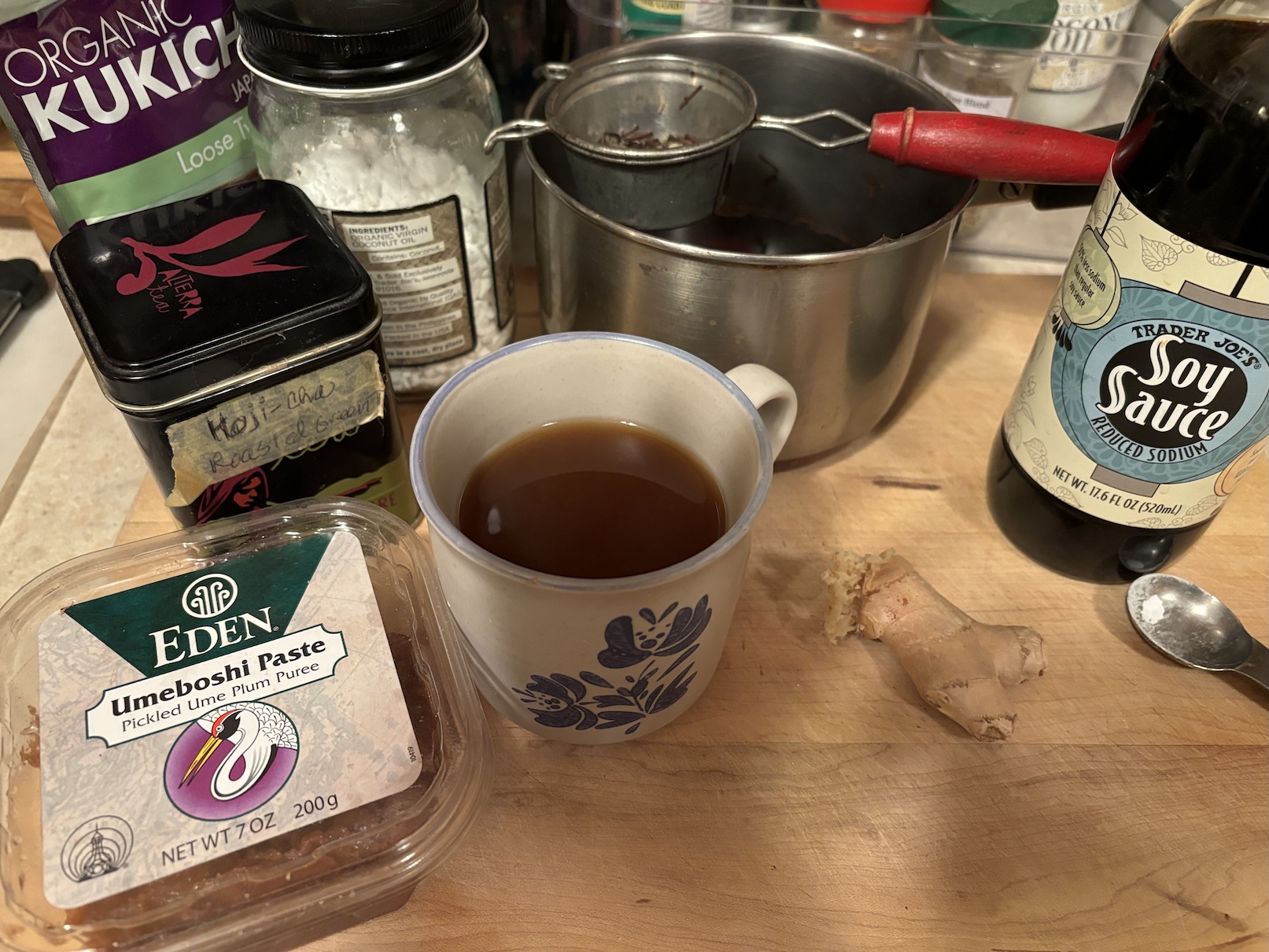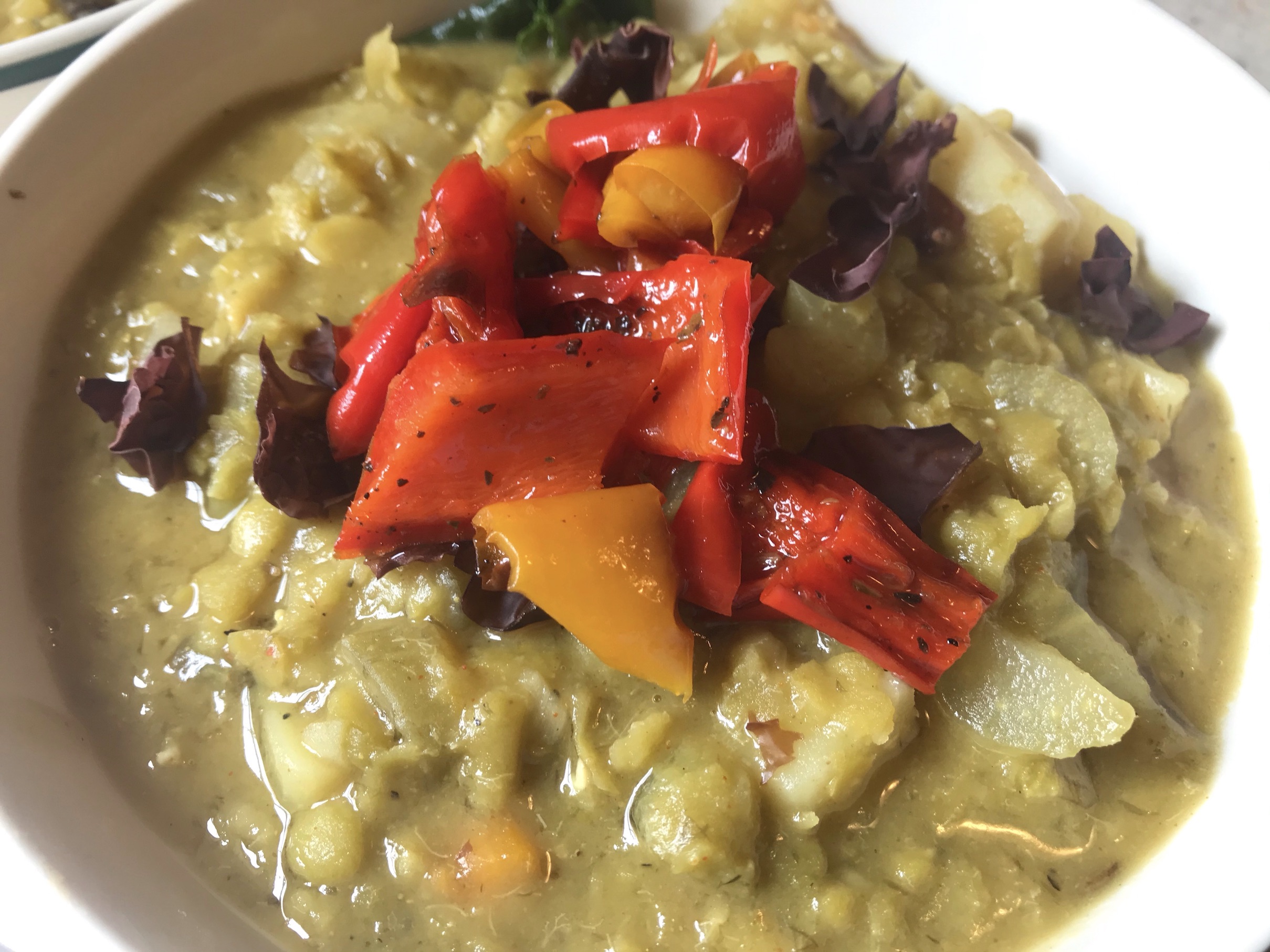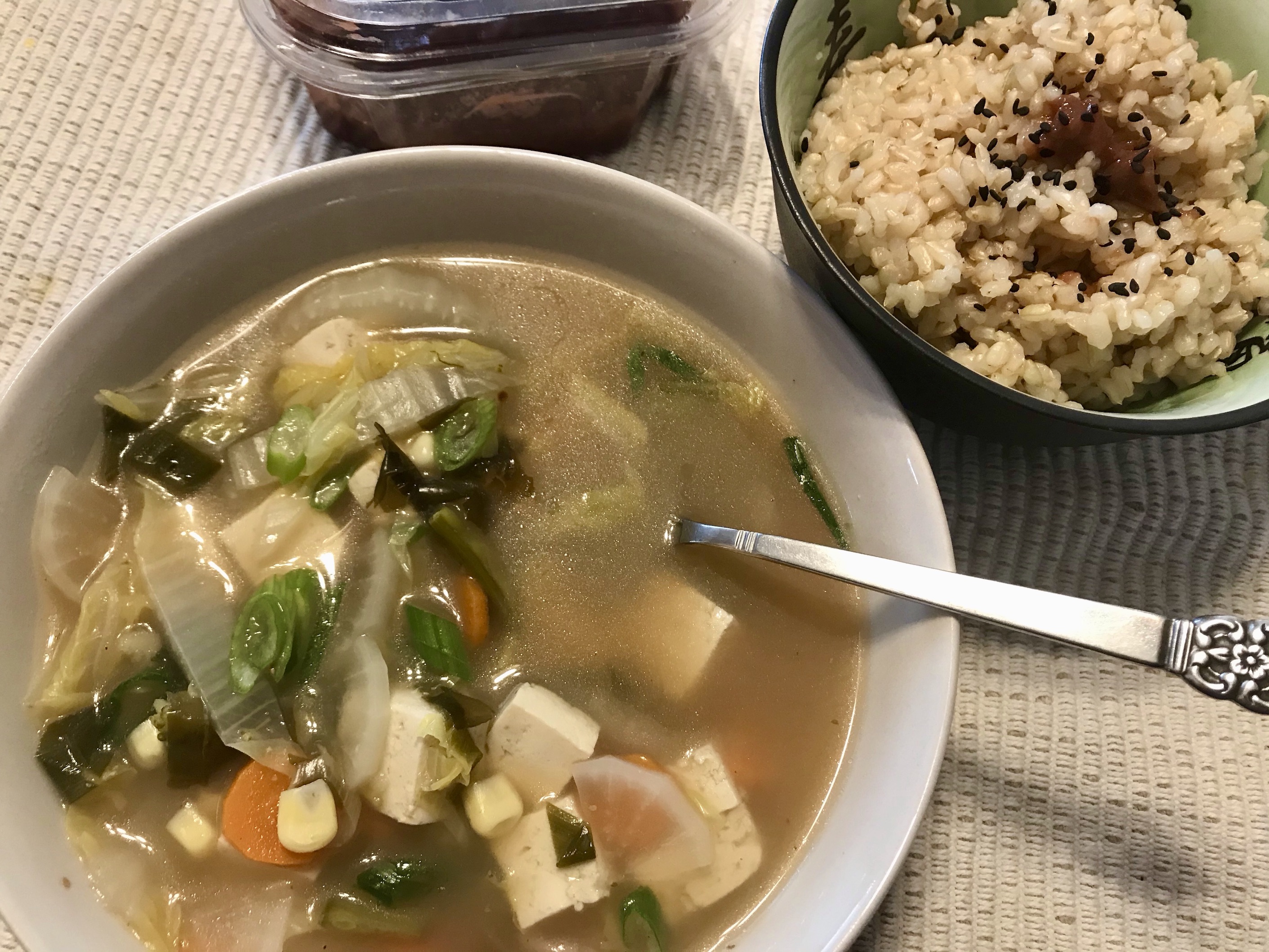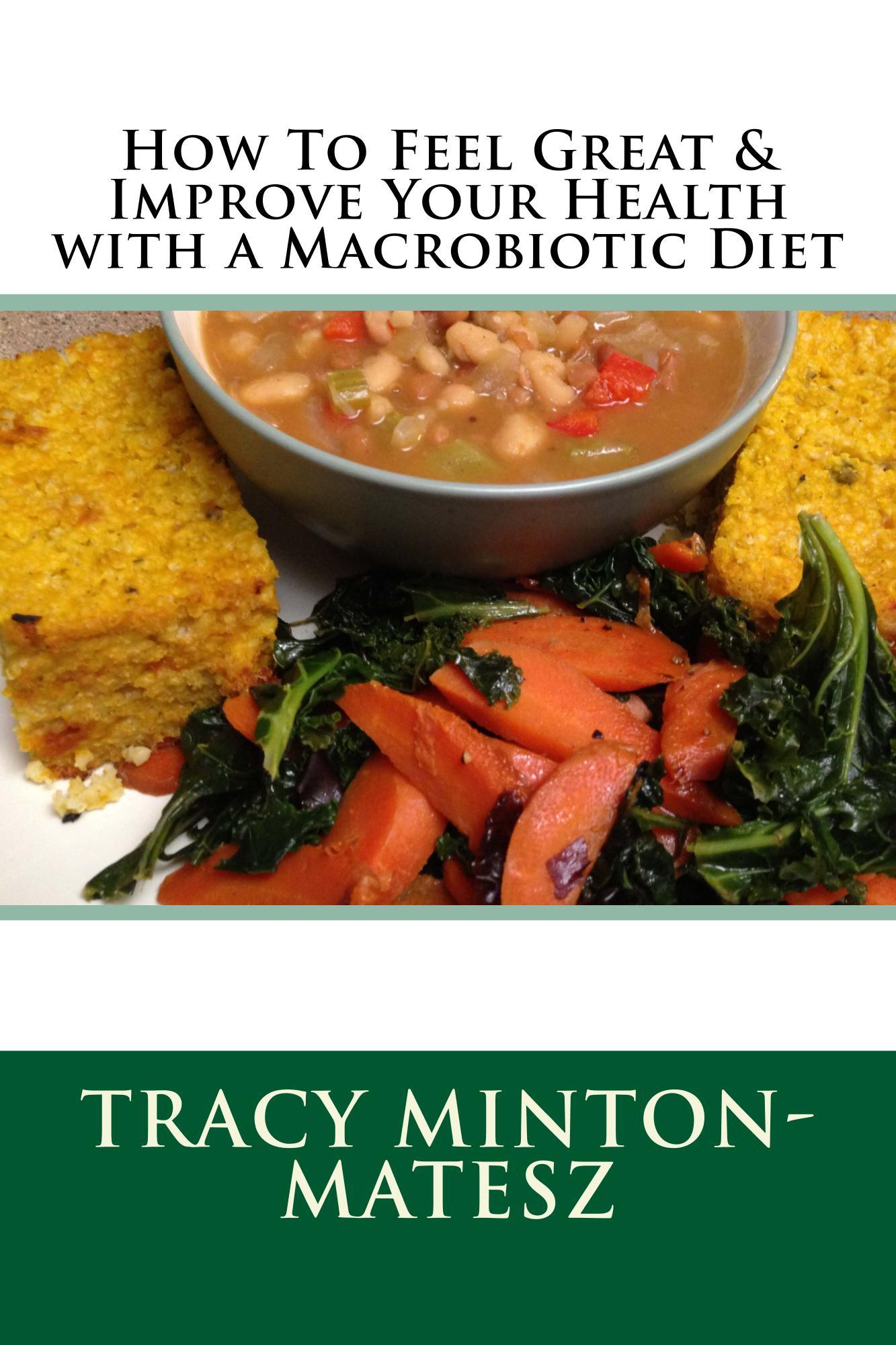Must-Have Seasonings For Macrobiotic Cooking - Miso, Tamari And More
Seasonings for macrobiotic cooking add a savory flavor, and help make simply prepared meals taste great with seeming little effort. The right seasonings can improve digestion, harmonize elements of a meal, increase satisfaction and enjoyment of our food, and promote health.
Macrobiotic cooking techniques are deliberately varied seasonally, and according to individual needs - to restore health and maintain balance.
- Home
- Meal Prep / Batch Cooking Tips
- Best Brown Rice, Rice Balls, Sushi & Porridge
- Seasoning for Macrobiotic Cooking
Miso & Shoyu / Tamari or Soy Sauce - Two Healthy Seasonings for Macrobiotic Cooking
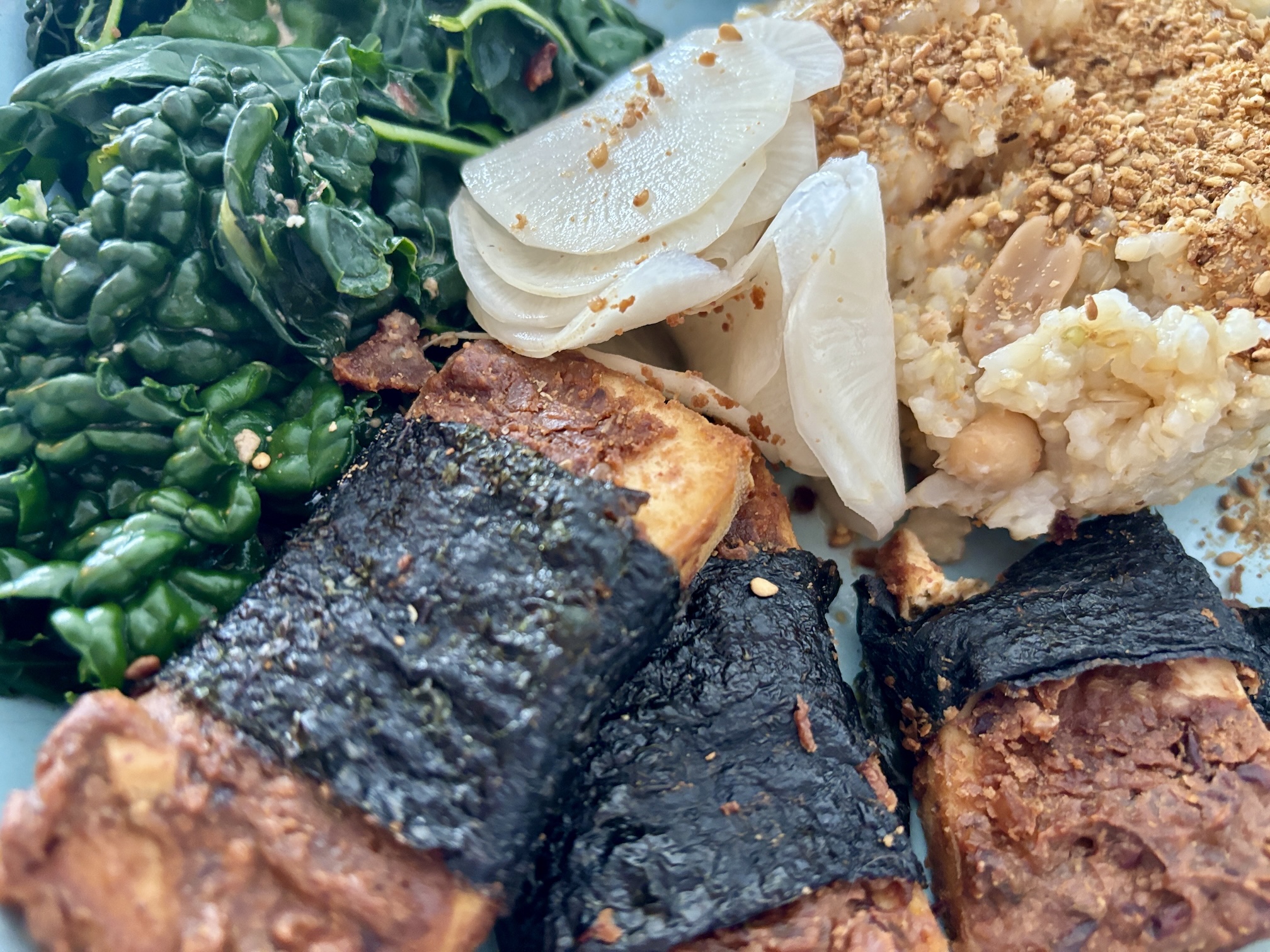 Nori Wrapped, Miso Peanut Butter Baked Tofu, Brown Rice, Daikon Radish & Greens w/ Gomashio Garnish
Nori Wrapped, Miso Peanut Butter Baked Tofu, Brown Rice, Daikon Radish & Greens w/ Gomashio GarnishHealthy seasoningts for macrobiotic cooking ~ and vegan / plant-based diets in general ~ provide a savory, and in some cases a smoky, umami flavor to a variety of soups, stews, vegetables, bean dishes, noodle dishes, grains, and other savory entrees.
Seasonings for macrobiotic cooking create a harmony of flavors, and help balance the Yin and Yang elements of your meals - adjusted seasonally and as per your condition. In particular, savory seasonings containing sodium balance potassium-rich fruits and vegetables. Maintaining the appropriate balance of sodium and potassium salts in the body is very important for many reasons, including the proper functioning of our kidneys and our heart.
In addition to sea salt, the two primary seasonings for macrobiotic cooking that I am featuring in this article include a good quality, naturally brewed soy sauce (shoyu or tamari), and miso, both of which I highly recommend and never go without.
I also briefly highlight a few seasonings that I like adding to stir fries, or that can be used to impart a smoky flavor, such as in Split Pea Soup, or in marinades for tofu, tempeh or wheat meat (seitan) dishes.
You may also want to read my article about healthy condiments for macrobiotic cooking, including Gomashio, seaweed, and umeboshi plums or paste, all of which have many uses and health benefits.
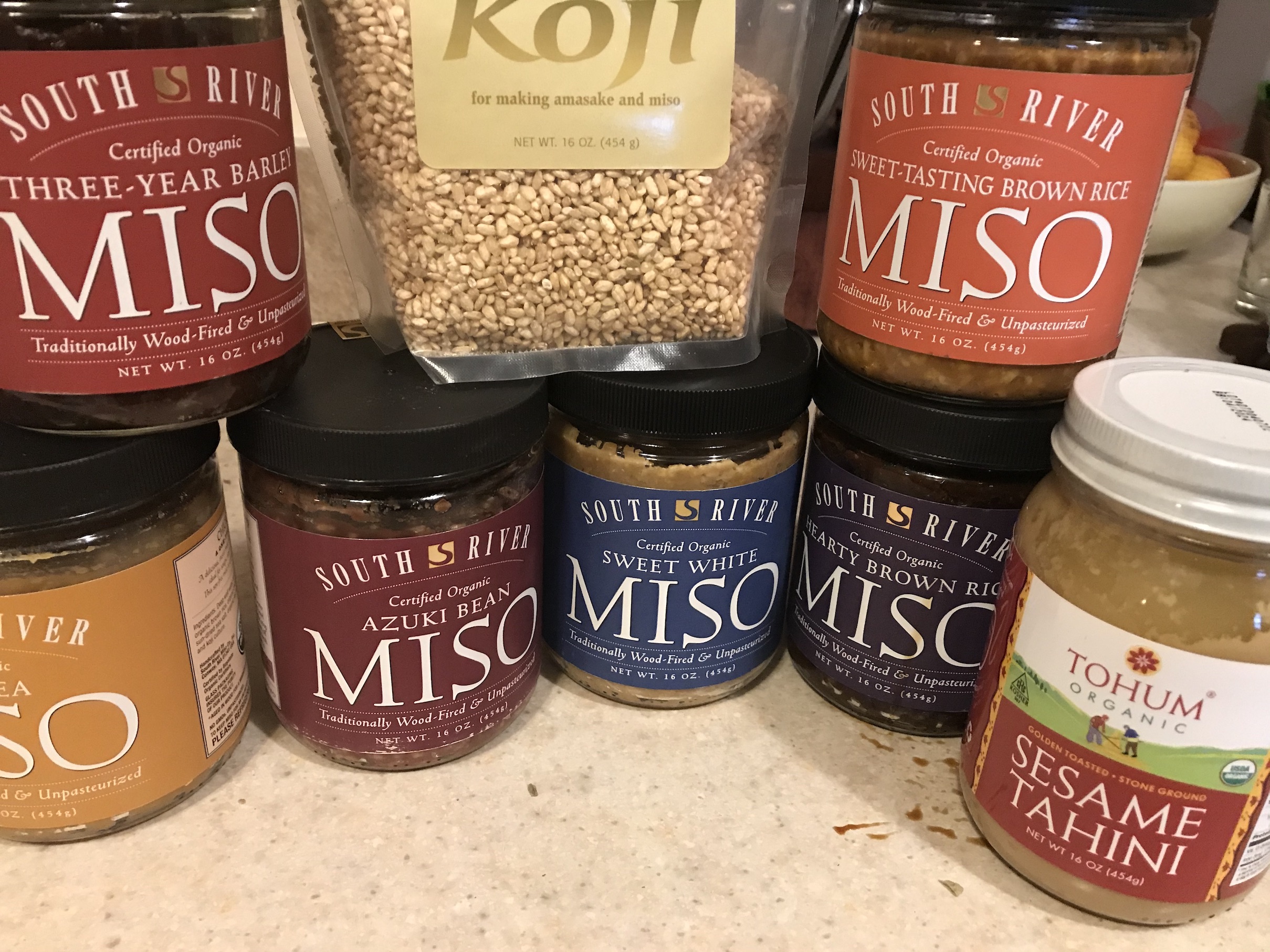
Miso Types & How To use
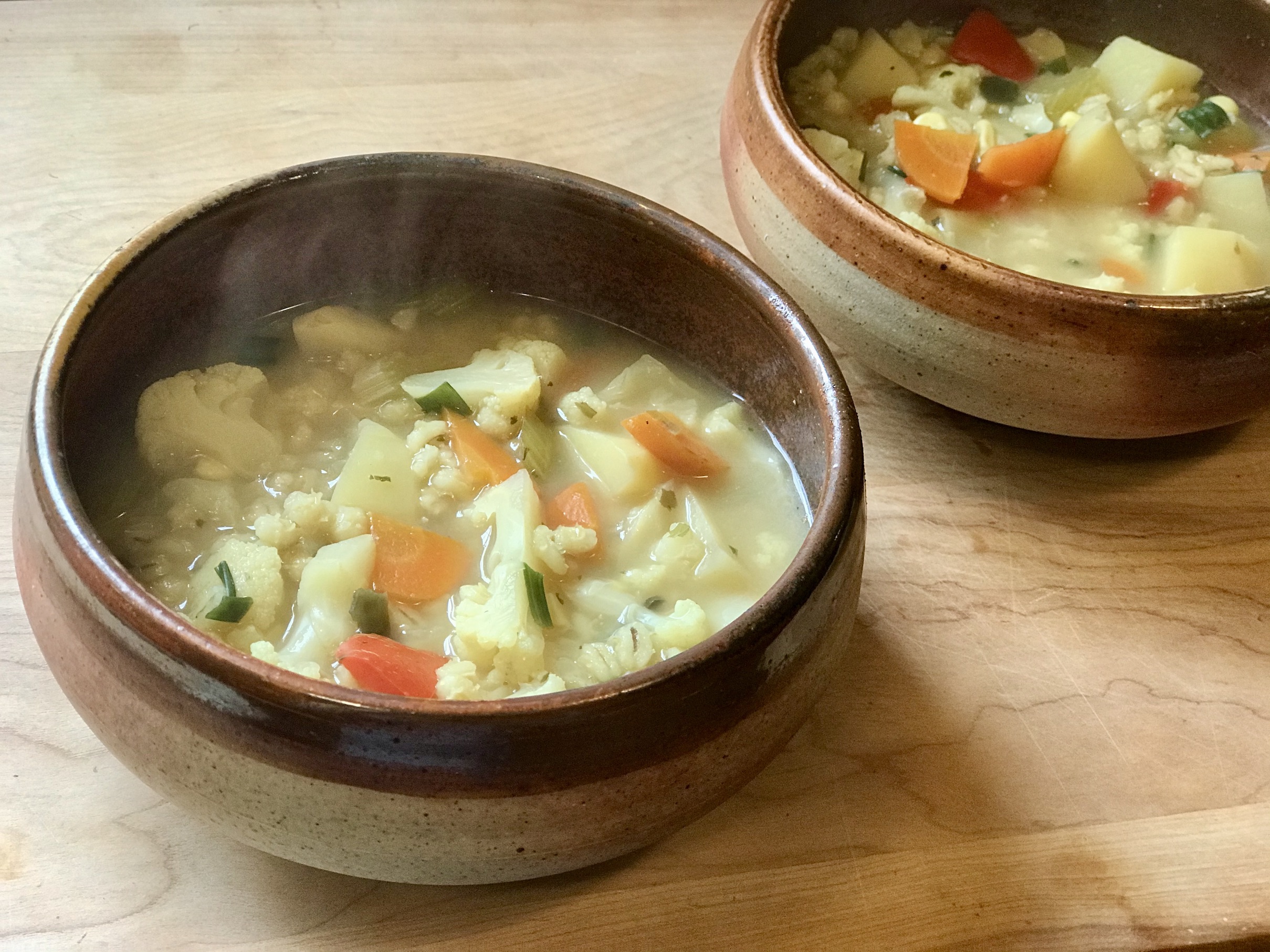 Barley Cauliflower Soup with Sweet (White) Miso
Barley Cauliflower Soup with Sweet (White) MisoMiso will be your new favorite seasoning for making delicious Miso Soups, and Miso Tahini Spread or Sauce, especially when you see how easy they are to use!
Miso is a 'traditional, nutritious' (1) commonly used fermented seasoning for macrobiotic cooking, and in traditional Japanese diets. It's made with soybeans, a rice koji fermentation agent (also used in making sake) and salt.
Miso can be made with other grains or beans, including brown rice, barley, chickpeas or adzuki beans, and is usually fermented 6-12 months. The color, flavor, and salinity concentration, ranging from milder / sweeter / lighter colored miso to darker, and more savory miso, depends on the ingredients used, how they are prepared, and how long it's aged.
As a seasoning for macrobiotic cooking, Barley Miso, aged 2-3 years is most prized for both flavor, and health benefits. The live enzymes are very beneficial, with anti-cancer and anti-microbial effects, and have been used in macrobiotic diets and Japanese cooking for ages. Miso has also been found to help regulate cholesterol, and eliminate effects from radiation.(2),(3)
When purchasing, know that darker color miso will be saltier, typically aged longer; while lighter color miso like white, chickpea, or 'mellow' miso will be sweeter and lower sodium. It's nice to have a variety on hand for different purposes.
Light colored miso pastes are good for:
- Miso Tahini Spread or Sauce
- Slightly sweeter bean soups like Yellow Split Pea, or White Bean, Squash & Kale Soup
- Making dressings
- Added to dips, like my Hummus and White Bean Dip in Basic Macrobiotics Menus & Recipes
- Recipes where you prefer to maintain the lighter color of other foods, such as when added to the above bean dips, or if making mashed potatoes, or other mashed root vegetables
- Sauces for vegetables
- Desserts! I added some to a White Sweet Potato Pie I made recently without any type of sweetener at all, just sweet white miso and some nut/seed butter
- Any dish where you prefer a little less salty and more sweet flavor
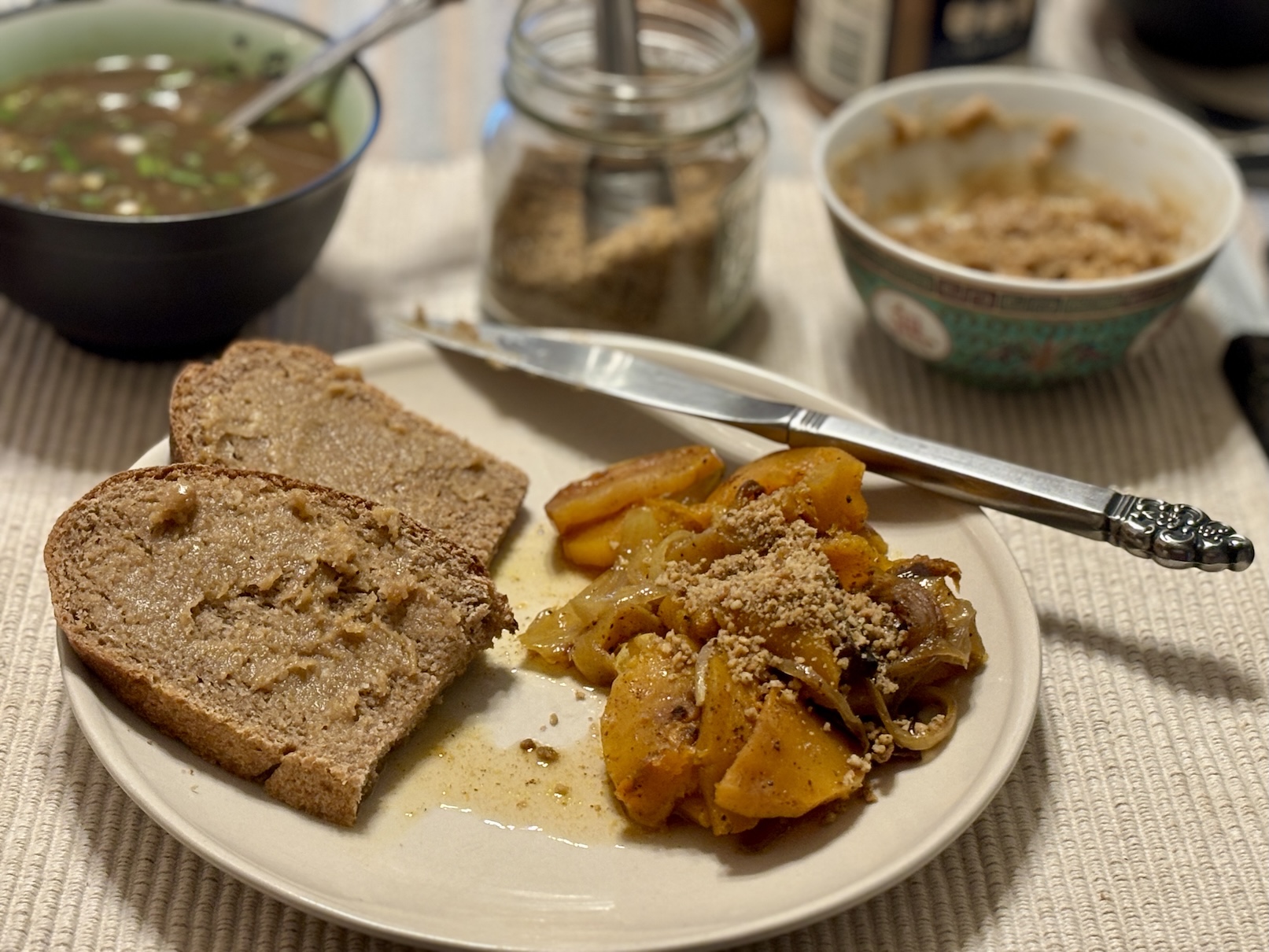 Homemade Whole Wheat Sourdough Bread w/ Miso Tahini Spread, Roasted Butternut Squash, Red Onion & Apple w/ Walnut-Salt & Miso Soup
Homemade Whole Wheat Sourdough Bread w/ Miso Tahini Spread, Roasted Butternut Squash, Red Onion & Apple w/ Walnut-Salt & Miso Soup White Sweet Potato Pie Seasoned with Miso & Cashew Butter is completely sugar-free
White Sweet Potato Pie Seasoned with Miso & Cashew Butter is completely sugar-free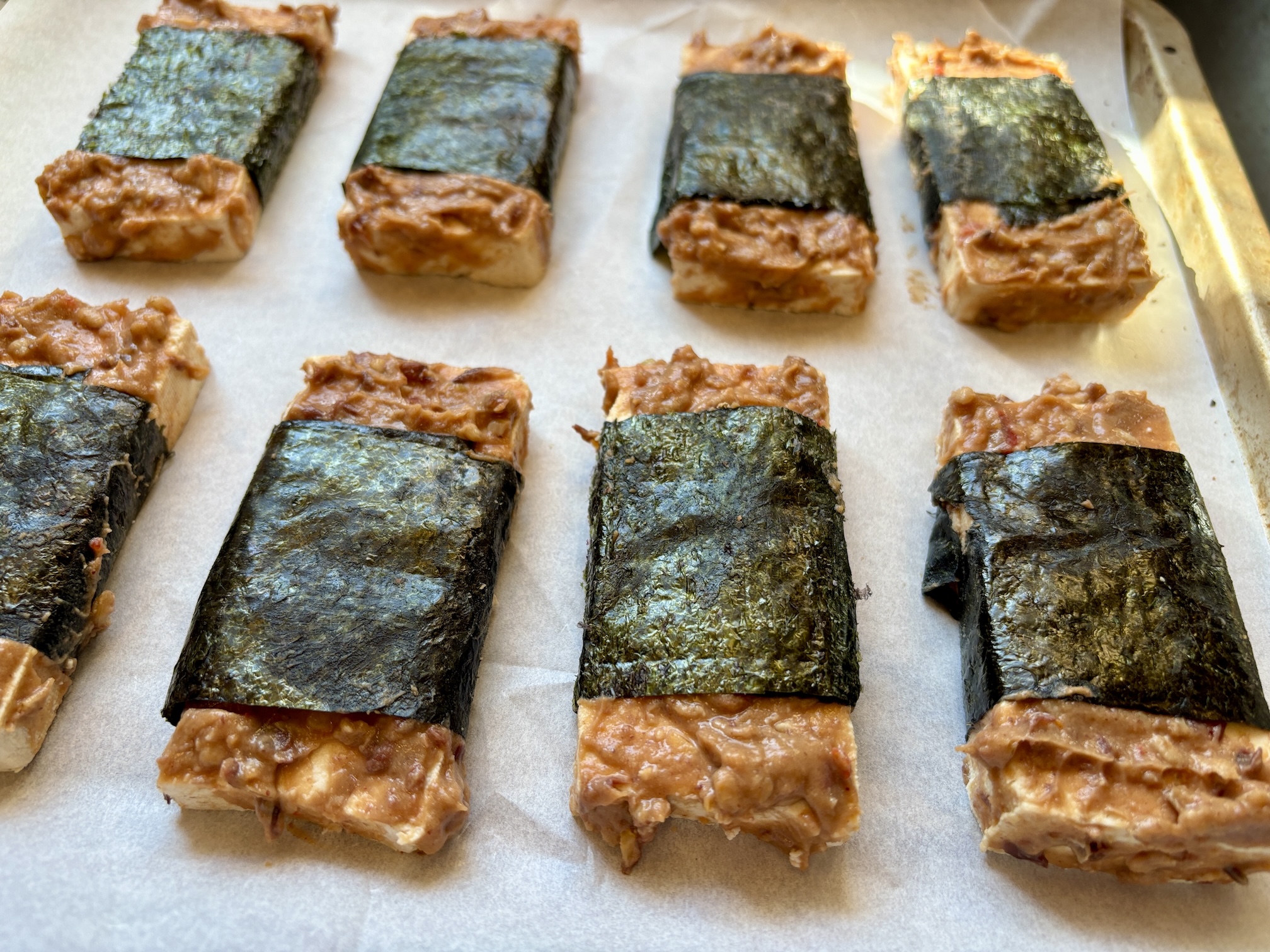 Miso Peanut Butter Baked Tofu Wrapped in Nori
Miso Peanut Butter Baked Tofu Wrapped in NoriDarker miso is good for:
- Miso Tahini Spread or Sauce (can be made with lighter, more medium or darker miso
- Miso Soup
- Bean soups made with darker colored beans (black, aduki or red kidney beans)
- Stews
- Marinades and sauces for tofu or tempeh
- Any recipe that you want to be more savory
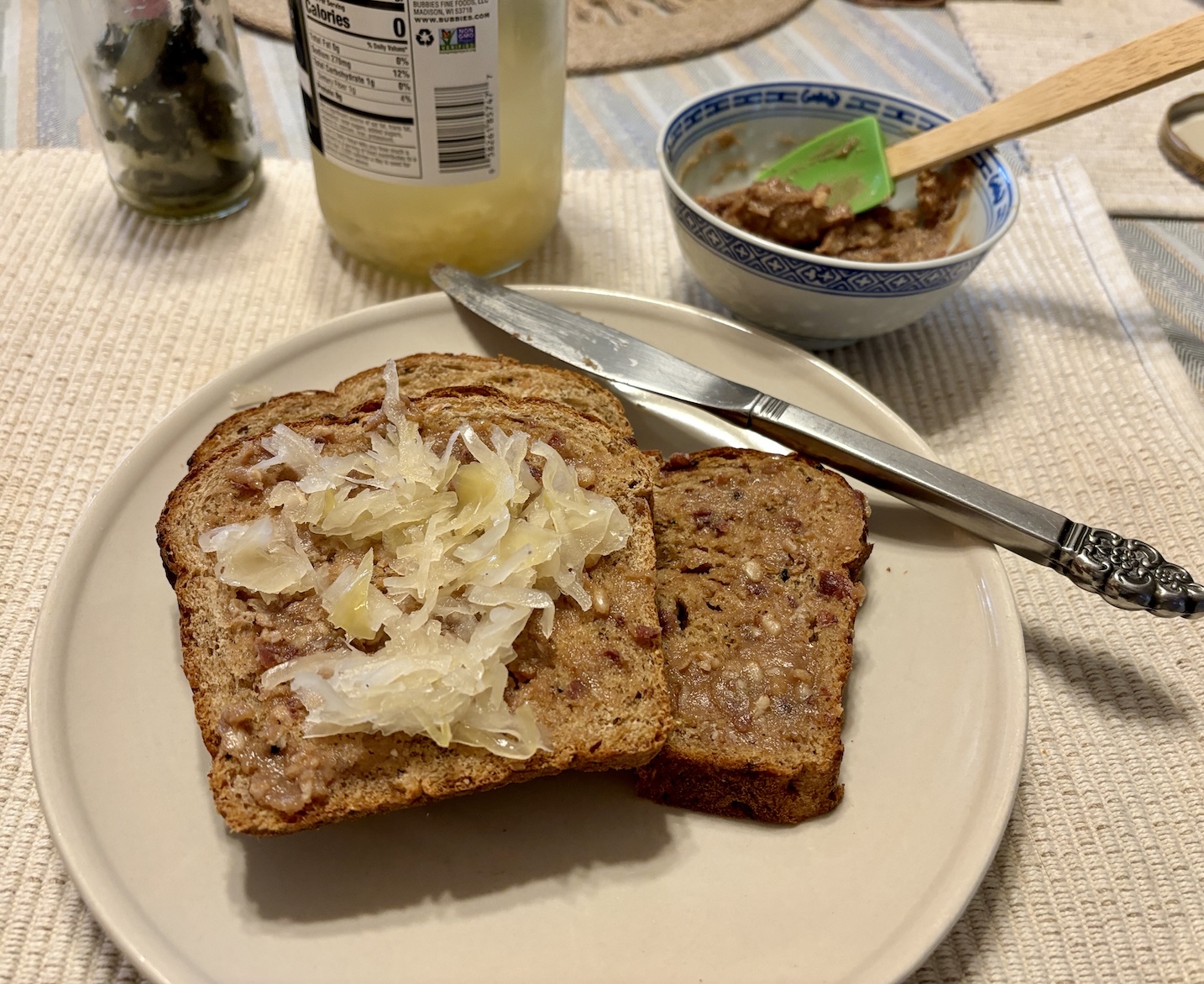 Miso Tahini Bread on Homemade Whole Wheat Sourdough Bread w/ Bubbie's Sauerkraut Miso Tahini Bread on Homemade Whole Wheat Sourdough Bread w/ Bubbie's Sauerkraut |
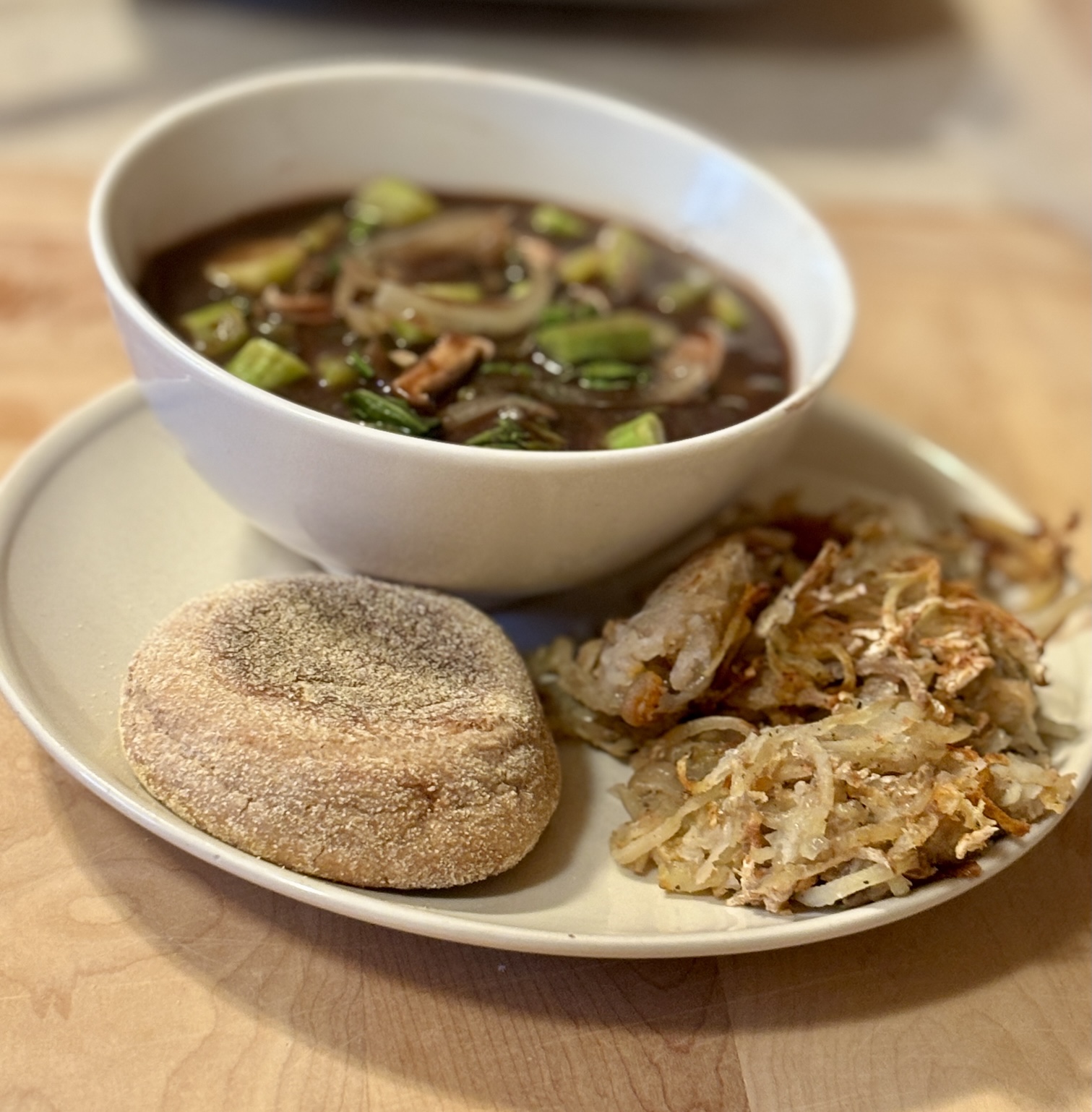 Therapeutic Aduki Bean Soup made with seaweed, ginger, tamari, black sesame seeds and astragalus root w/ Easy Baked Hash Browns & Whole Wheat English Muffin Therapeutic Aduki Bean Soup made with seaweed, ginger, tamari, black sesame seeds and astragalus root w/ Easy Baked Hash Browns & Whole Wheat English Muffin |
Which Brands of Miso are Best?
Miso ranges quite a bit in quality. Miso should contain little if anything more than the grains and beans, a koji starter and sea salt. Avoid those with alcohol or preservatives.
Here are a few favorite, better quality brands which we order online.
- South River Miso is one of our favorites, which you can read more about on my Japanese Dashi Broth & Miso Soup recipe page.
- Miso Masters is made in the USA ~ Try White, Country Barley, or Red Miso for the richest, saltiest flavor.
- Also of excellent quality are Ohsawa Barley Miss or Clearspring Brown Rice Miso
How to Use Miso
You can add miso to individual serving bowls, or the pot of soup. Generally speaking, If I think I may have leftover soup, I add miso directly into each serving bowl. This way when I go to reheat leftover soup the next day, I can add fresh miso at the end, so it doesn't boil.
DO NOT boil soup once the miso paste is added or it will destroy the beneficial enzymes.
Add 1+ teaspoon of miso to each serving bowl, then add a ladle of soup broth. Stir / mash miso paste into the soup using the back of a spoon (or use a small whisk.) Once combined, add the rest of the soup to each serving bowl, and give it a quick stir.
If adding directly to the pot, it's still easier to stir enough miso per serving (try 1 teaspoon to start, then add more if needed) into a small bowl with a ladle or two of the soup broth, then add it back to the pot.
All that said, I still sometimes stir miso right into the soup pot. I use the back of a second spoon when I do it this way.
Let simmer on low for another minute or two, add sliced scallions or chopped parsley, and serve.
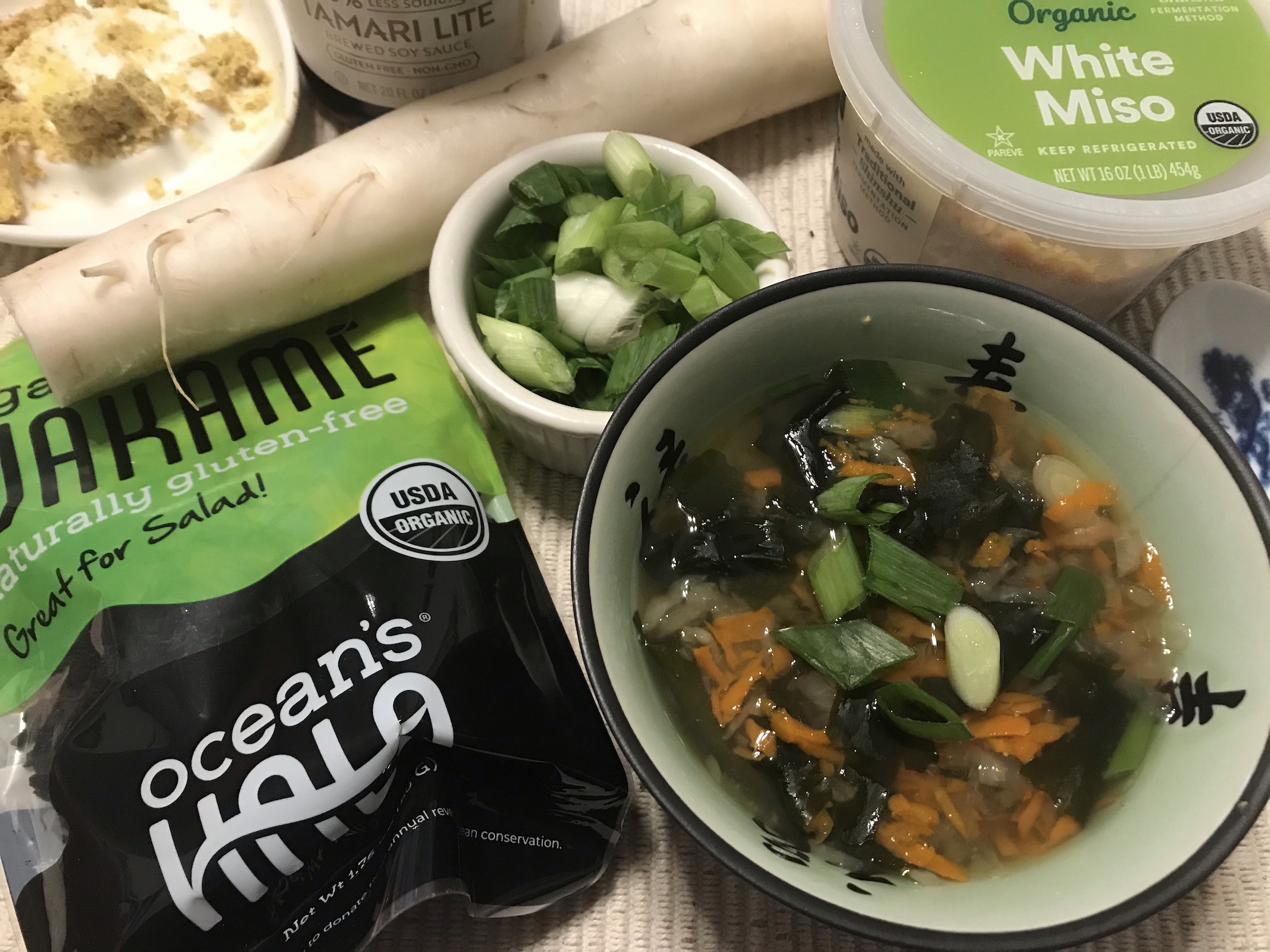 Wakame is a mineral-rich seaweed often added to Miso Soups or Cucumber Salad; White Miso is milder, sweeter & lower in sodium; add to soups, dips, dressings++ Wakame is a mineral-rich seaweed often added to Miso Soups or Cucumber Salad; White Miso is milder, sweeter & lower in sodium; add to soups, dips, dressings++ |
Shoyu, Soy Sauce & Tamari Explained
Soy sauce has been a seasoning used in Chinese and Japanese cooking for a very long time.
In the article, The History of Soy Sauce, soy sauce is believed to have originated in ancient China, in a variety of sauces called "jan" made from pickling various foods, including fruits, vegetables and seaweed, with salt to preserve them. There were different varieties for different purposes. One such type of jan was made for grains using rice, wheat and soybeans, which most likely is what became known as soy sauce we use today.
In Japan, it was called "hishio," with a thicker consistency, ranging between soy sauce and miso. Kakushin, a Zen monk brought the Kinzanji method of making miso from China back to Japan in 1254 (during the Kamakura era).
According to the article, "It is said that while he was teaching that miso-making method to the villagers of Kishu Yuasa, he noticed that the liquid that seeps out of hishio tasted really good, and that became what is now known as “tamari soy sauce”.
Hence tamari is by-product of making miso, traditionally with soybeans only, although some contain a little wheat. Those on gluten-free diets will want to look for tamari labeled "wheat-free."
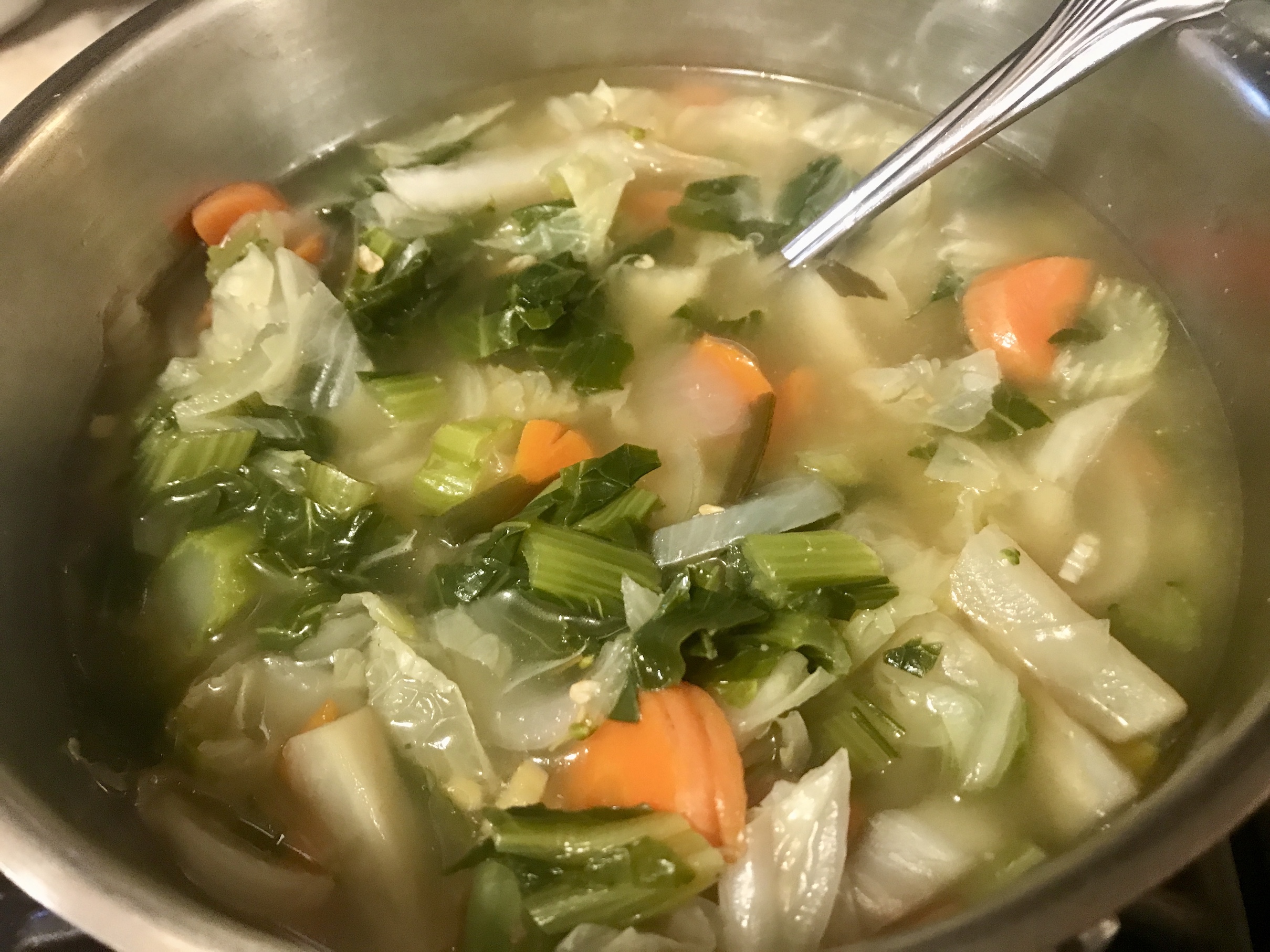 Making Miso Soup
Making Miso SoupSomewhat similar to making miso, soy sauce is made by combining soy beans and roasted wheat with a koji starter, then combined with water and salt to make a thick mash, which is fermented in large vats for 18 months or longer, before being strained and bottled.
There are light and dark soy sauces. Dark soy sauce is more viscous, less salty, and a little sweet, usually sweetened by adding molasses. Be sure to look for good quality soy sauce, free of colors, caramel flavor or other additives.
Shoyu is the Japanese name for soy sauce. The preferred seasoning for macrobiotic cooking is Ohsawa Nama Shoyu Sauce, considered the gold standard as it is unpasteurized, and contains live beneficial enzymes (similar to miso or yogurt), uses less salt and is very clean and pure tasting, imparting great flavor to foods.
I have ordered my first bottle of the Ohsawa Nama Shoyu Sauce, and look forward to tasting it.
I generally have been using San-J Brand Tamari. I used to use the Reduced Sodium or Tamari Lite, but have since switched, although it's nice to have a lower sodium option on hand, depending on your condition, the season and the recipe.
Trader Joe's also makes a decent reduced-sodium soy sauce.
A Few More Seasonings For Macrobiotic Cooking with a Smoky or Umami Flavor
- Smoked Paprika & Liquid Smoke also add a smoky flavor to vegan soups and stews. A little goes a long ways! Just a few drops of liquid smoke are often all that is needed.
- Vegan Worcestershire Sauce such as Annie's Organic Vegan, Wizard's Organic Vegan, and Savory Spice GF Worcestershire sauces gives stews, bean dishes, and marinades a rich, tangy, savory kick. Great in Vegan Split Pea Soup.
- Dried Shiitake Mushrooms is another seasoning for macrobiotic cooking, I often add 2 larger or 4 smaller dried shiitake mushrooms to my Miso Soup. After simmering for 15-20 minutes in water with seaweed, I remove the shiitakes with a slotted spoon, and carefully remove the stem once cool enough to handle. I cut the mushrooms in half or quarters, and add them back to the soup pot.
Shiitake mushrooms have been found to lower blood pressure, and have anti-cancer effects. They infuse soups or stocks with a meaty / chewy texture, and that highly coveted umami flavor.
Dried shiitake mushrooms can also be added to stir fries. Pre~soak them for 20-30 minutes, until softened. (Using boiled water will quicken the process.)
The soaking liquid can be used to make a sauce for the stir fry. Combine kudzu root with a little cool water to dissolve, add the shiitake soaking liquid and shoyu / soy sauce or tamari, then add to stir fry and let simmer on a medium-low heat until thickened.
Look for them at a local Asian market, or try Anthony's Dried Shiitake Mushrooms, Vigorous Mountains brand or mushroom powder.
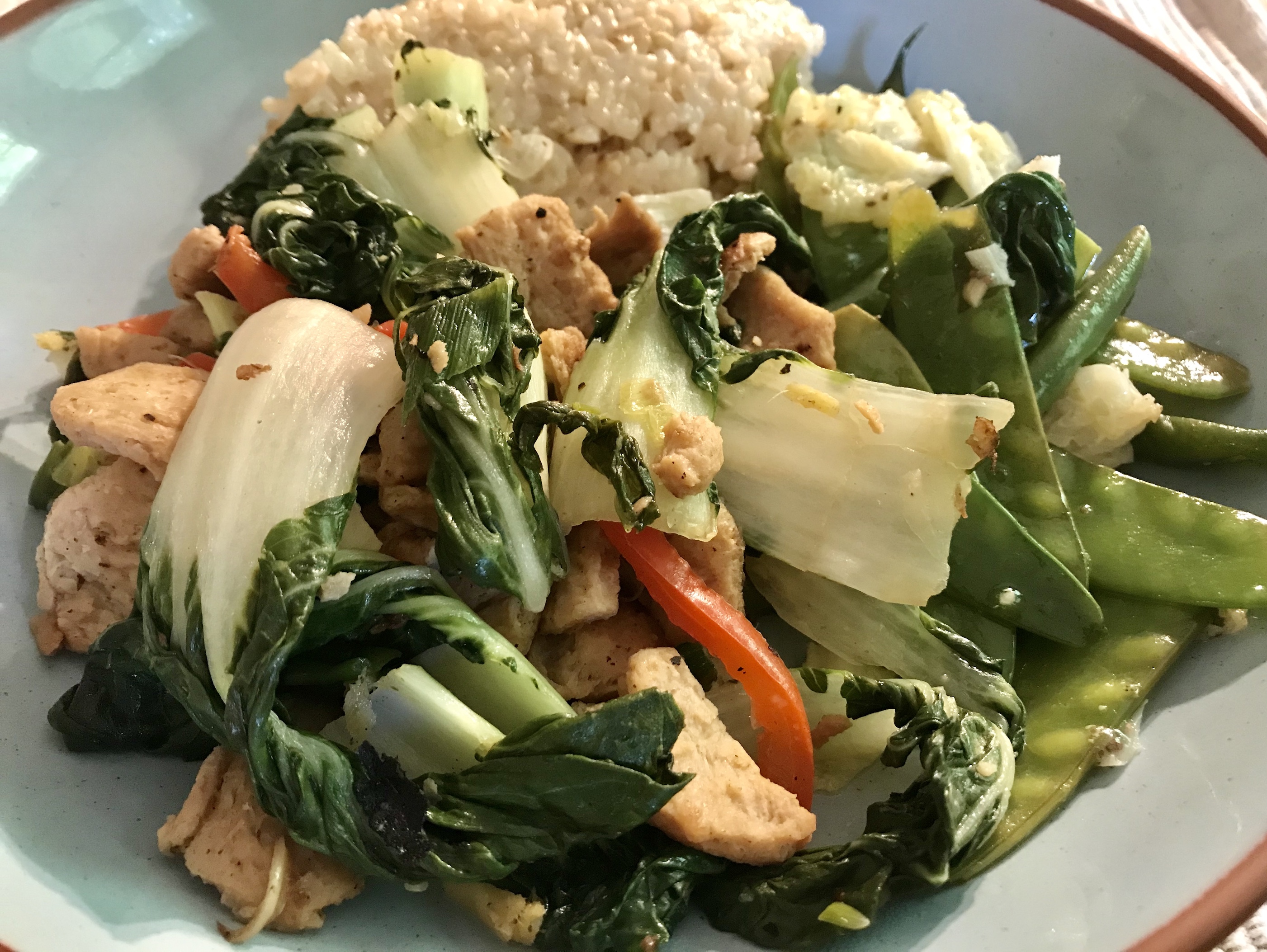 Stir fries can be simply seasoned with shoyu, tamari or a good quality, naturally fermented soy sauce Stir fries can be simply seasoned with shoyu, tamari or a good quality, naturally fermented soy sauce |
A note about all the resources: I've included links to those products I use, or trust to be of a better quality and value. Some of these may also be found at your local natural foods store, Whole Foods, or online for a better price at Vitacost.com. Any purchases made through the above links do provide a small commission for me, which helps support my time to continue making more informative content available, and is greatly appreciated!
Some foods prepared with the various seasonings for macrobiotic cooking featured in this article
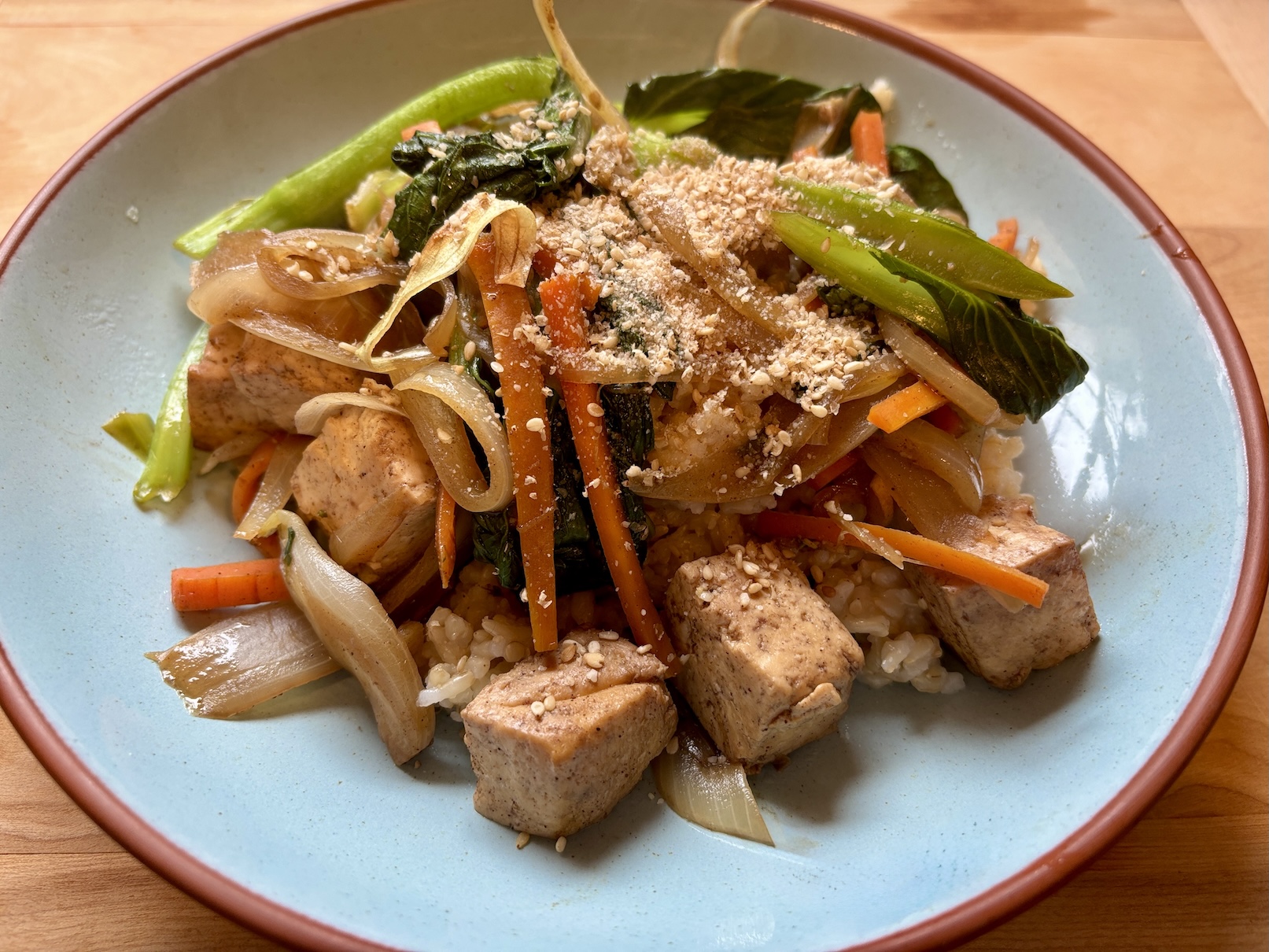 Tofu Vegetable Stir Fry w/ Tamari & Gomashio Garnish
Tofu Vegetable Stir Fry w/ Tamari & Gomashio Garnish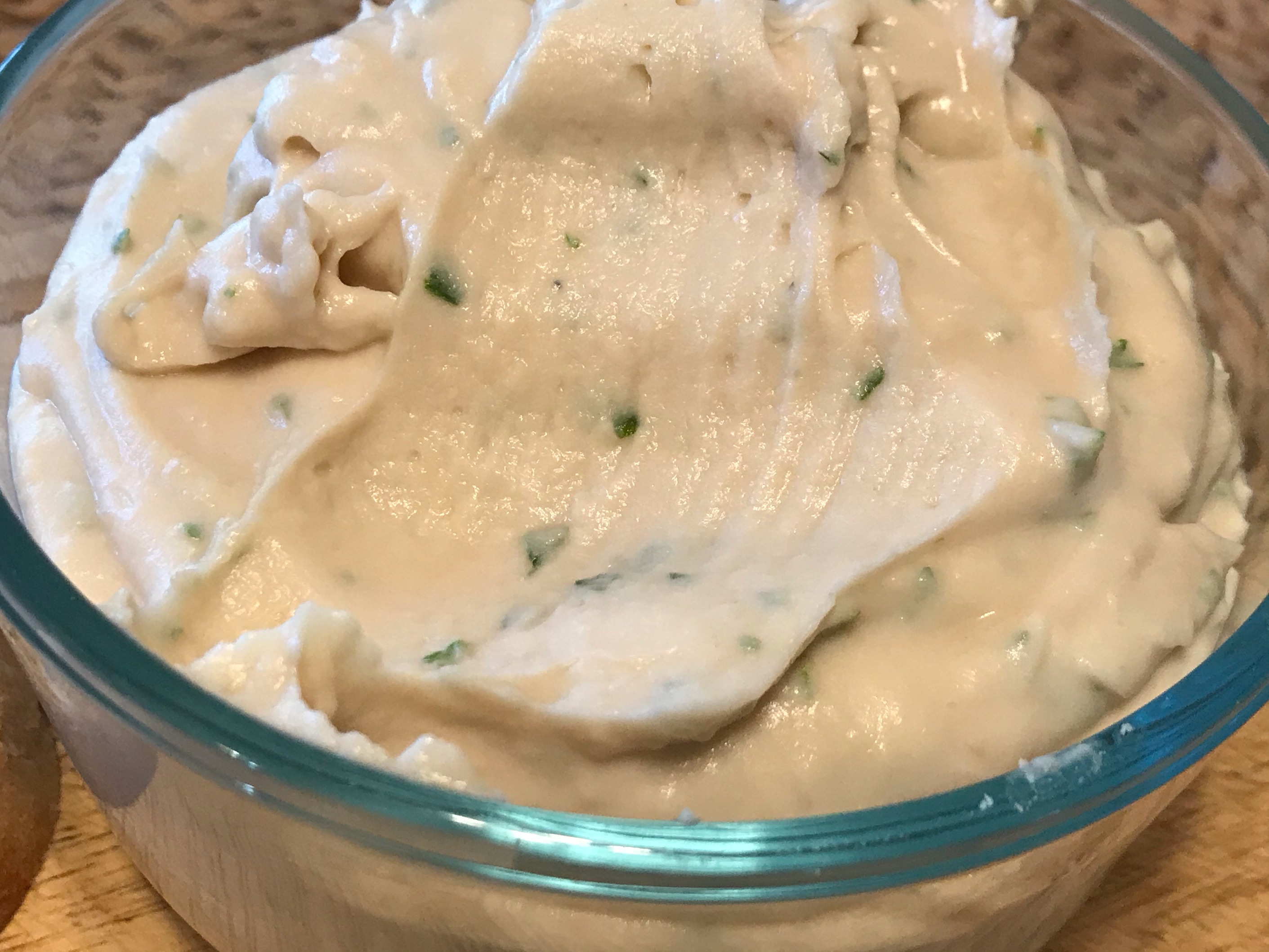 White Bean Dip made with white miso, tahini & a few olives
White Bean Dip made with white miso, tahini & a few olives
Featured Recipes Using Seasonings for Macrobiotic Cooking
To Learn More
Research Cited for Healthy Seasonings for Macrobiotic Cooking Article:
(1) PubMed, Miso: A traditional nutritious & health endorsing fermented product review
(2) PubMed, Miso, A Traditional Nutritious and Health Endorsing Fermented Product
Shiitake Mushrooms Lower Blood Pressure, Dr. Sarah Brewer mylowerbloodpressure.com.
Shiitake Mushrooms May Help Prevent Cancer, cancerhealth.com
Want to get started eating a healthy balanced vegan macrobiotic diet / or a simple plant-based diet?
>>>Return to Home Page
>>>Vegan / Vegetarian / Plant-Based Diet Basics >>>Plant-Based Meal Prep
>>>Must-Have Seasonings for Macrobiotic Cooking
